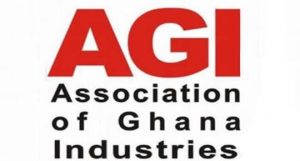Global gold exchange-traded funds (ETFs) added 61.3 t, valued at about $3.4-billion, in May, reversing three straight months of net outflows, which the World Gold Council (WGC) says is largely a function of investment demand increasing with the price strength of gold, along with renewed inflation concerns in the market, a weaker dollar and lower real yields.
Global assets under management (AUM) stand at 3 628 t and valued at about $222-billion.
Larger funds in the US, the UK and Germany were the primary drivers of flows again, and flipped to net inflows.
North American funds added 34.5 t ($2.1-billion), while European funds recorded inflows of 31.2 t ($1.6-billion).
Funds in ‘other’ regions lost 1.9% of assets, valued at about $69-million, while Asian-listed funds had outflows for a second straight month (about $210-million, representing a 2.7% decrease) coming almost entirely from China, which had strong local stock market strength.
Asia does, however, remain the strongest region in terms of percentage growth this year, having added 11%, or 13.8 t, to holdings through the end of May, the WGC comments.
The council continues to see strong inflows into low-cost ETFs across the globe, most recently evidenced by 6.3 t (about $366-million) into Xtrackers IE Physical Gold and 1.5 t ($92-million) into SPDR Gold MiniShares during May.
The 8.3 t of net inflows in the low-cost space represented 13% of net global inflows during the month, and the 181 t of low-cost assets now represents 5% of the total global gold ETF market compared with less than 3% a year ago, the WGC says.
In terms of price performance and trading volumes, gold finished the month 7.5% higher at $1 900/oz, breaking through resistance and making gold effectively flat on the year, rallying 13% in the last two months.
Gold daily trading averages rose meaningfully during May to $176-billion, after falling for two straight months. This, the council noted, is slightly higher than the 2021 average of $165-billion and below the 2020 average of $183-billion, more in line with the 2019 average of $146-billion.
Net long positioning, via the recent Commitment of Traders (COT) report for gold COMEX futures, moved higher to 725 t ($44-billion), the highest since early February 2021, but below the 2020 average net long level of 871 t ($53-billion).
The average weekly net long positioning historically remains at about 500 t ($31-billion).
Regional flows, meanwhile, saw large North American and European funds driving inflows, with North American funds recording inflows of 34.5 t ($2.1-billion). Holdings in European funds rose by 31.2 t ($1.6-billion) and funds listed in Asia recorded net outflows of 3.3 t (a reduction of $210-million).
Other regions had outflows of 1 t (a reduction of about $69-million).
Further, long-term trends show that global gold ETF AUM bounced back and is only 9% below the all-time August 2020 highs, and that large US funds continue to drive net global inflows in both directions.
Gold ETF flows have, however, started to catch up to the gold price rebound over the past few months, the council said, noting that Asian gold ETF holdings growth remains above 11% this year, but that it has slowed over the past two months.
The WGC’s short-term price performance model suggests that all but two of the underlying variables it uses had a positive contribution to gold’s performance – the first month this has happened since June 2011.
The council also believes that the recent strength of gold is owing to a function of, besides other aspects, higher inflation expectations, the weaker US dollar, positive gold sentiment and price momentum.
Anecdotally, some additional supporting factors include gold prices catching up to other commodities ‘reflation’ strength, a strong holiday demand in China and increased central bank demand, the council concludes.






